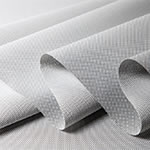“About 20 years ago, we saw that if we were going to continue to be a viable textile weaver in the United States, it would not be competing on price alone,” says Bill Strickland, national market manager at Phifer Incorporated. When his market exploded during the late 1990s and early 2000s, with production shifting simultaneously to East Asia, Strickland says the 62-year-old company, based in Tuscaloosa, Alabama, decided to compete on a different level. The resulting decision, to keep employees in the US and focus on product development, led to Phifer’s SheerWeave fabrics becoming the first window treatment product line to achieve GREENGUARD certification. (Read more about GREENGUARD in our feature “This School May Be Hazardous to Your Health.“)

The company’s sun-control products are manufactured in this state-of-the-art facility in Tuscaloosa, AL.
Phifer was founded in 1952 when an Alabama lawyer, J. Reese Phifer, began weaving insect screening. With that expertise, he developed a line of sun-control products that grew rapidly during the energy crises of the 1970s. When heating-and-cooling costs spiked, government and utility programs subsidized the cost of homeowners adding solar screens to block heat gain and cut energy use. “Oftentimes our product was the one named in those programs,” Strickland says. The transition to interior shading was a natural one, and now Phifer produces a broad range of products all under the name SheerWeave, including 34 fabric styles of roll-up window shades.
SheerWeave fabrics, however, with some exceptions, are vinyl-coated. Strickland began to receive phone calls in 2005, in which consumers or architects were “either expressing concern with the PVCs—the chemical content and chemical emissions into the air—or were looking for other options,” he recalls. “Toward 2007, those inquiries became commonplace. I was getting them every week.” It wasn’t enough anymore for the manufacturer to say its product was safe. Third-party verification represented relief for architects or homeowners who wanted products that met EPA and other standards for chemical content and emissions.

“It’s not an arbitrary, vague claim,” Phifer’s Bill Strickland says of the Ecolibrium plasticizer used on SheerWeave’s 4000 line. “You’re actually having a direct impact that can be calculated by how much fabric is being used on the project.”
Phifer submitted its range of fiberglass-core window treatment fabrics for GREENGUARD certification. “We didn’t know how relevant it would be,” Strickland says. “But it was a way to satisfy a market that was becoming more savvy and aware.” The company’s fiberglass and polyester lines had always matched each other’s sales, but fiberglass—the GREENGUARD-certified line—started outpacing polyester. It seemed clear that the certification was making a difference.
With more than 80 products already listed in UL Environment’s Sustainable Product Guide, Phifer continues to introduce alternatives to traditional vinyl-coated fabrics. For example, Infinity2—an olefin-based fabric in a variety of weave densities—is PVC-free, contains 100-percent recycled content, and is 100-percent recyclable. Ecolibrium—a mainly corn and soy-based plasticizer developed by Dow Chemical—recently replaced the typical petroleum-based plasticizers for SheerWeave’s 4000 line. According to Dow, using Ecolibrium reduces greenhouse-gas emissions by up to 40 percent compared to the regular PVCs. “It’s not an arbitrary, vague claim,” Strickland says. “You’re actually having a direct impact that can be calculated by how much fabric is being used on the project.”
(Read more about GREENGUARD here.)

